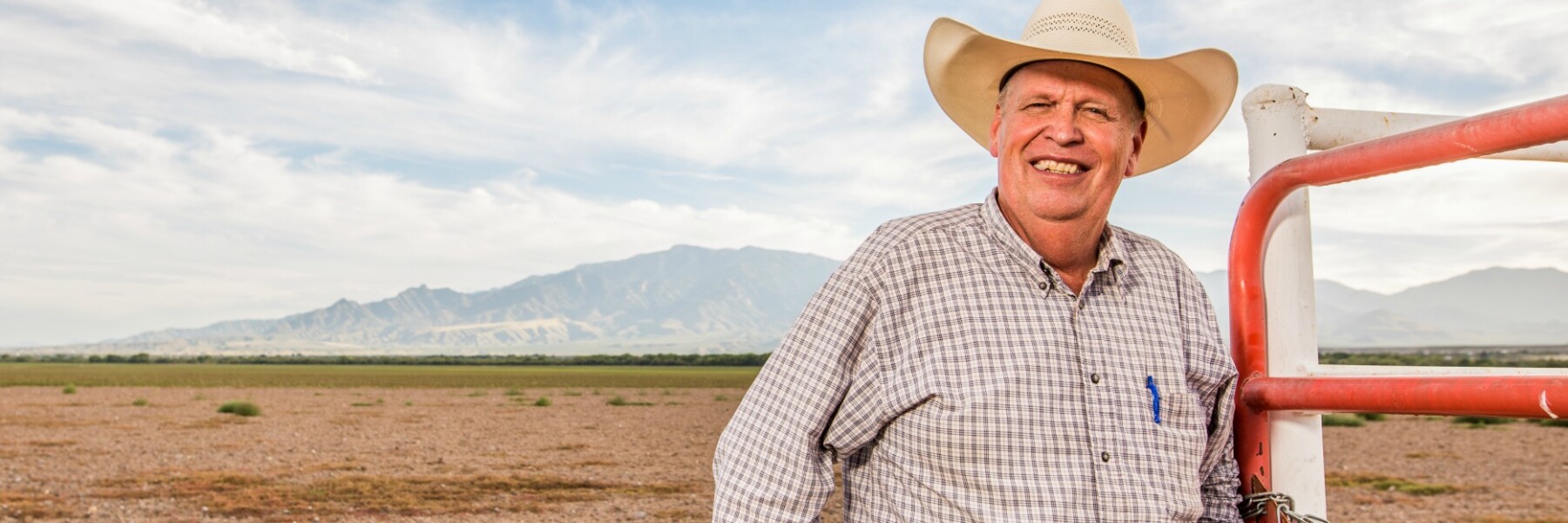From Jim Bryce’s 400-acre farm in southeastern Arizona, he has a perfect view of some of the most naturally rich land in the Southwest.
Bryce’s family has had stakes in the West going back six generations to the 1870s, when Jim’s great great grandfather, Ebenezer Bryce, pioneered in the region. Bryce Canyon National Park in Utah, which is named after Ebenezer, stands testament to how deep the family’s roots go in this part of the country.
Because of his family’s long history in the West, Jim has also had a front row seat to the progressive degradation of the Colorado River systems due to invasive plant species. The Gila River, which runs through his land in Arizona, has endured extensive damage over the years from tamarisk (salt cedar) and other non-native plants.
At the peak of flood season, Jim has seen more than 60 acres of his crops drowned in water. Although it is a normal process in riparian (riverside) ecosystems, this flooding has only become a problem in recent years as tamarisk has replaced native plants along the banks of the Gila River.
Now when the water rises, tamarisk spreads like wildfire, ultimately choking out the river and destroying the cropland. For the past three years, Jim Bryce has been working with the Army Corps of Engineers to remove the tamarisk infestation and repair the natural river systems.
Using heavy machinery and quite a bit of elbow grease, Jim and his teams have made headway against the tamarisk, and he says they are seeing the fruits of their labor.
“There are always skeptics (about river restoration methods), but anything you can do to get rid of the tamarisk and enhance the river, most everybody’s happy about that. It makes salt, and takes water, and you can’t really recreate on the river with (tamarisk) in the way.”
Tamarisk is non-native invasive species that is considered among the biggest threats to healthy riparian habitat along tributaries of the Colorado River. Tamarisk grows in dense stands that limit access to the river for recreation and agricultural use. It consumes large amounts of water, increases soil salinity and overwhelms native plants. Tamarisk also constrains natural river processes that create and maintain riparian and instream habitat and can exacerbate the risk of floods.
Its removal allows native plants to re-establish, improving riparian habitat for virtually all western wildlife that depends on river corridors. It also re-establishes natural river processes that support instream habitat and fisheries, improves fishing and boating, and can increase instream flows. For now, Jim looks forward to continuing the work to restore the riparian areas to a more natural, healthier state.
Jim’s inspiration for repairing the river ecosystems stems from his family’s longstanding dedication to the land.
“My dad says it’s better to be a good ancestor than to have one. My great great grandfather had a mill on this river, and it’s really just amazing to me how much he did on this river,” he says. “If they did it, we can do it too. It just gives you a sense of who you are and what you can do. Whatever you want to do, you can do it.”
Looking forward, Jim hopes to see more progress. He cites the release of the tamarisk beetle - a natural predator of tamarisk - into the surrounding areas as a long-awaited development that can also help halt the advance of tamarisk.
By repeatedly eating and defoliating the leaves of tamarisk, the beetle helps to control the spread of the invasive plant by reducing its reproductive viability. That gives native plants a chance to recover.
“I think if the beetle comes, then you’ll see the change,” Jim explains. “We’re hoping for it.”
In the meantime, Jim is working with groups such as the 20-year-old Gila Watershed Partnership to coordinate river restoration efforts.
Not only is the Gila River an asset to the ecosystem here, it holds a special place in Jim’s heart.
“I even go a little further than respect, I go to reverence. It’s a beautiful thing, and to me it’s a God-given thing. We need to respect it, for future generations. There’s something in you when you live by a river. It doesn’t wait,” he says.
“You can take the boy out of the country, but you can’t take the country out of the boy. That’s the same way with the river. You can take us away from the river, but you can’t take the river out of us.”




